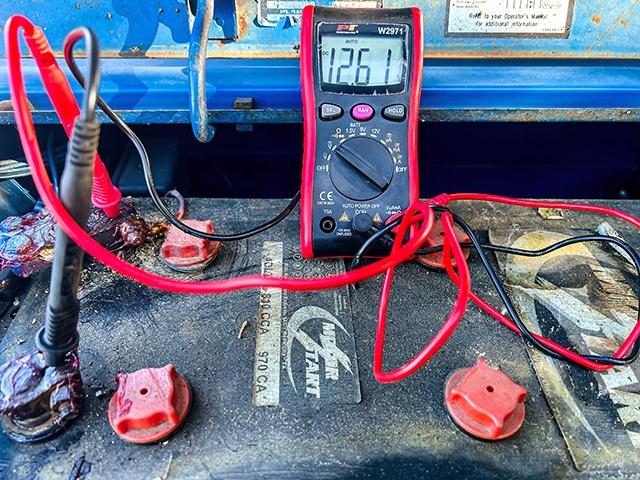Ask the Mechanic
Do-It-Yourself Electrical Checks
READER: I have a 5103 John Deere tractor that has a problem keeping the battery charged. It will start the tractor, but the battery is weak. I changed the battery, but the new battery is also undercharged, especially with the lights on. Is it possible for the alternator to be charging but not enough? How can I check?
STEVE: Sometimes, the alternator can be charging but not to its full 14-volt potential. Your battery needs to hold more than a 12-volt charge to cover the pull from lights, radios, air-conditioner blowers and compressor drain. That is why you have a 14-volt alternator.
Using a multimeter, you can check the alternator's DC output (what your battery is looking for) to make sure it's being lost to AC voltage output (what your house uses). This test is often called the ripple test.
P[L1] D[0x0] M[300x250] OOP[F] ADUNIT[] T[]
The first thing you need to do after starting the engine is switch your multimeter to AC voltage. Place the red lead on the big post of the alternator and the black lead to any ground. Your reading will show AC volts, and this amount should be very low. If the reading is over 0.5, then your alternator will probably need replacing because of damaged alternator diodes.
The low charge in your battery will also show up with a simple battery test with the multimeter. To do the battery charge test, place the multimeter on DC volts. With the engine stopped and everything off, your reading should be 12.6. Then, start the engine, and the voltage should read 1 to 1 1/2 volts higher than the reading when the engine was not running and everything was off.
READER: My 3000 Ford tractor has a huge battery in it, but it still goes down for seemingly no reason after a day or so. The generator is charging OK, but I believe I have a drain. How can I check for a drain?
STEVE: On your tractor model, there is very little that could drain the battery except lights and the voltage regulator. To find the drain, remove the positive battery post and put the multimeter on DC amps. Place one lead on the battery post and the other on the battery cable. This reading should be zero on this tractor, because you have no computers, electric shutoff switch or radio to show a drain. My guess is your voltage regulator is sticking.
READER: My IH 1666 combine batteries would not stay charged, so I bought a battery to replace the one that was the newest. However, I am still having the same problem. The charge from both batteries in parallel is 12.2 volts at the starter solenoid. What could be wrong?
STEVE: My experience of changing out one battery instead of both when two batteries are used has not been very successful. Sounds to me like you exchanged a good battery for a new battery, but you left the bad battery in the combine.
When two batteries are set up in parallel (two 12-volt batteries together making a strong 12 volts), the voltage in both batteries equates to the total voltage. In other words, one 12-volt battery with 12.6 volts and the other battery with 10.6 volts will produce only 11.6 volts. I suggest you have both batteries checked, because you possibly could have bought a new bad battery. Sometimes, new is not better.
**
-- Write Steve Thompson at Ask The Mechanic, 2204 Lakeshore Dr., Suite 415, Birmingham, AL 35209, or email mechanic@progressivefarmer.com, and be sure to include your phone number.
[PF_1223]
(c) Copyright 2023 DTN, LLC. All rights reserved.




